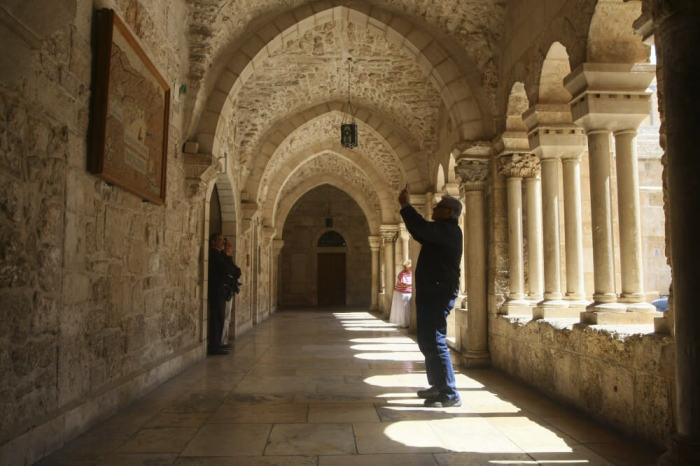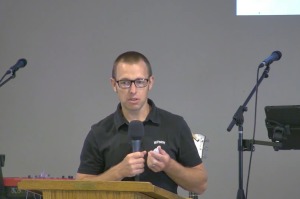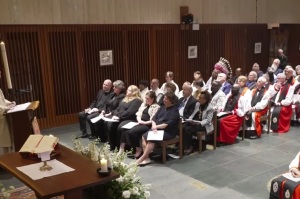Archaeology Discovery of Centuries-Old Painting in Church of the Nativity in Bethlehem

A rare and mysterious artifact has been discovered at the Church of the Nativity in Bethlehem, officials have confirmed.
The artifact, a centuries-old painting, was discovered two months ago by Palestinian archaeologists working to restore the holy site, which is considered to be of great importance to the Christian religion.
The small relic, which had been accidentally covered in plaster near a window, is made of bells, stones and shells.
Ziad al-Bandak, a presidential adviser for Christian Affairs in Palestine, told the Ma'an news agency that the painting is of great historical importance, and will be researched thoroughly before being put on display.
Al-Bandak added to the media outlet that it is thanks to the Palestinian-led renovation that the rare painting was discovered at all.
"The removal of centuries of dust has left mosaics sparkling in the sunlight filtering through brand new windows," al-Bandak said. "Structural repairs on the fragile rooftop and windows have been completed and artistic treasures have been returned to their delicate elegance."
As Discovery News reports, the Church of the Nativity, which is traditionally believed to be the birthplace of Jesus, endured years of neglect, causing UNESCO, an agency of the United Nations, to label it an endangered world heritage site.
In 2013, Palestinian authorities partnered with international religious groups, including the Catholic Church, to restore the church. So far, $8 million has gone toward the renovation, and al-Bandak has indicated another $11 million is needed to fully repair the site.
As The Christian Post reported earlier this month, the recent partnering of Christian and Muslim groups has contributed to the church's first restoration in over 600 years.
Along with neglect, the church has suffered multiple mishaps in past years, including minor smoke damage in 2014 when a candle in the grotto set fire to curtains. The church also suffered water damage due to a faulty roof.
Mimmo Nucatolo, who is overseeing an Italian team assigned to restore the church's mosaics, told the Associated Press earlier this month that the artifacts in the place of worship serve as "a unique example" of artwork from the Crusader period of 1095 to 1291.
Nucatolo said his team has removed layers of dusk to reveal vibrant green and gold mosaics.
"From underneath you could no longer see the colors, so much so that some people were wondering 'Do we really have mosaics in this church?'" the archaeologist said.
The Church of the Nativity was built in the fourth century and still receives thousands of visitors each year, despite its ogoing repairs.
Although the church's appearance is improving, UNESCO warns on its website that the culturally-significant attraction is still at risk for decay.
"The roof structure of the main Church is highly vulnerable to lack of maintenance and repair. The sharp increase in the number of vehicles, inadequate parking, and small industries within the historic town have produced a polluted environment that is negatively affecting the façades of both the Church of the Nativity and the buildings along the Pilgrimage Route," the UNESCO website states.
"Great urban pressure is acknowledged in the surrounding urban areas, to which largely unregulated tourism and traffic contribute. New constructions, some large, are disturbing the traditional urban fabric near the Church of the Nativity and are having a negative impact on views to and from the property, and on its sense of place and spiritual associations," the U.N. agency adds.




























